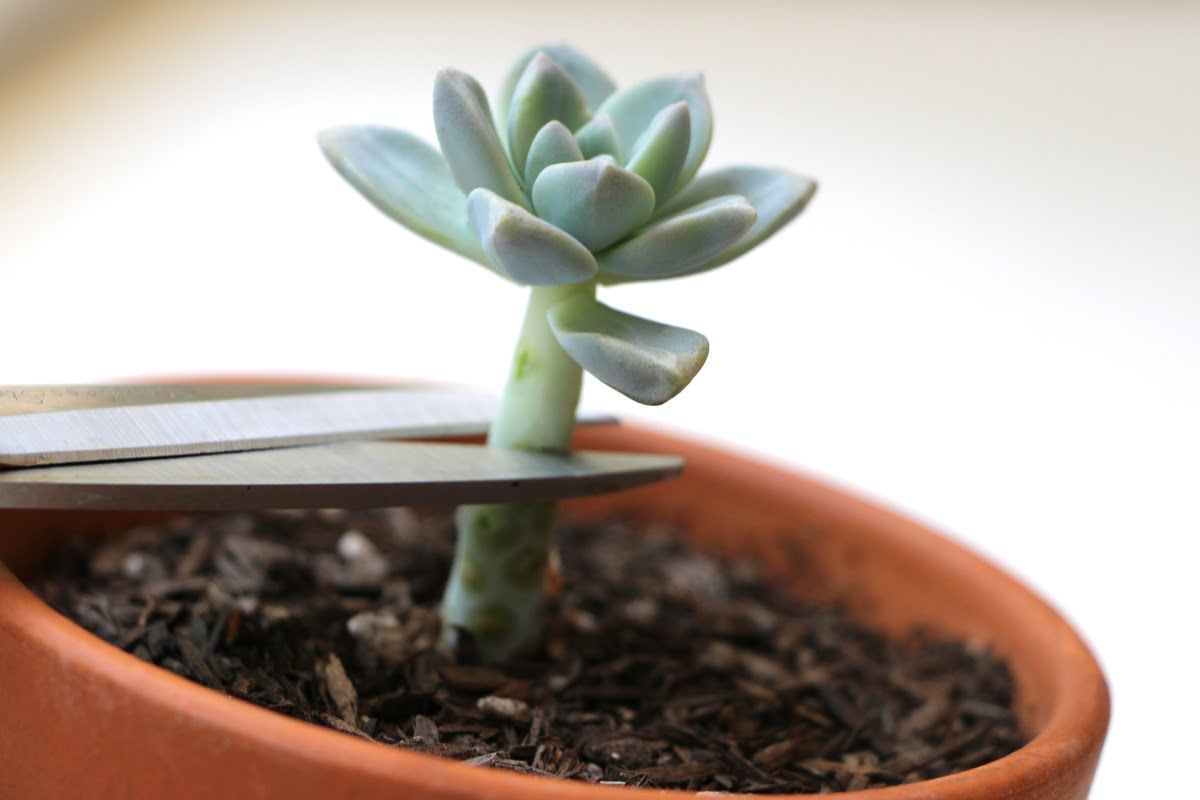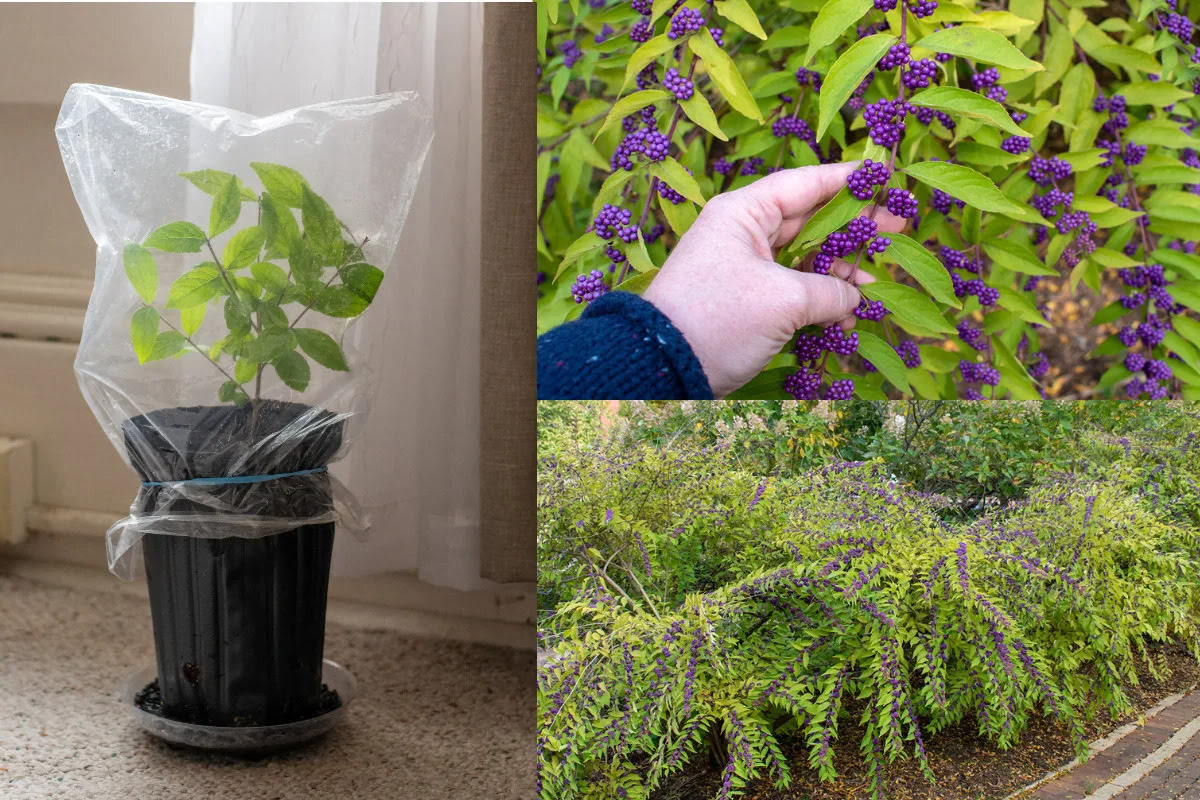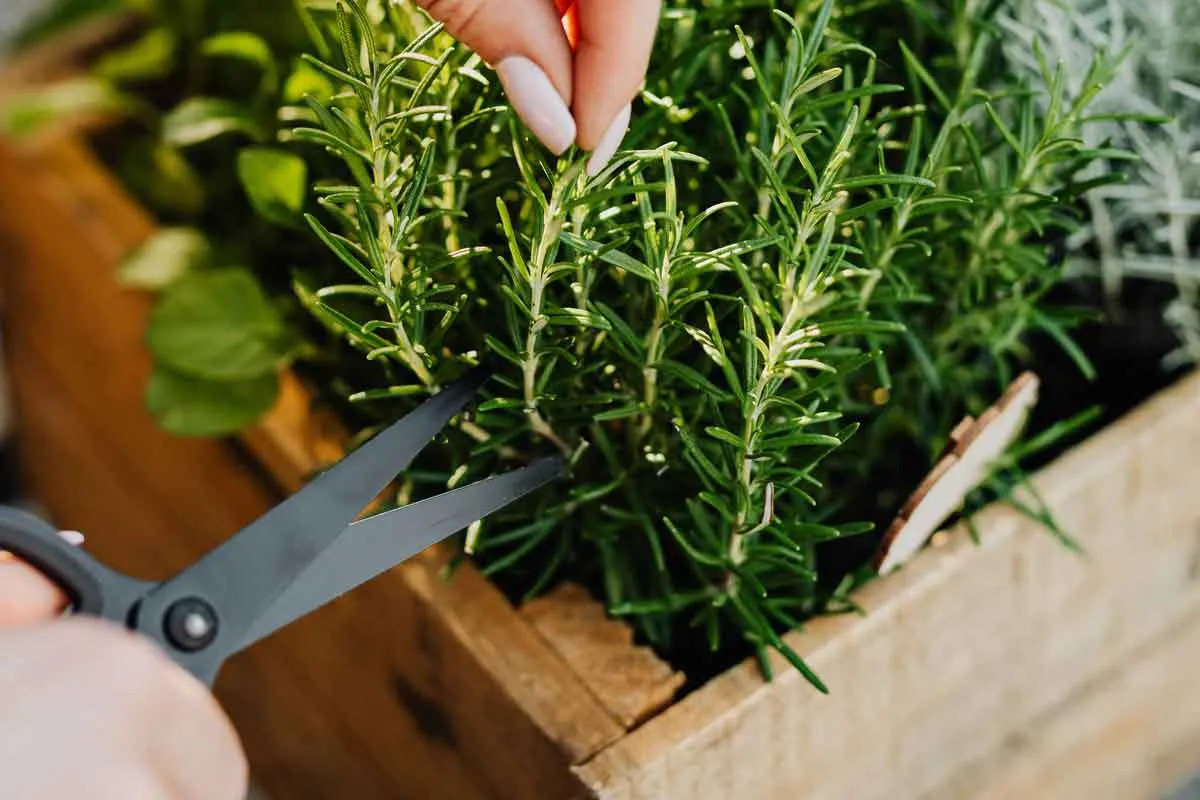Home>Gardening Tips and Tricks>Maximizing Yield>Where To Cut Schefflera For Propagation


Maximizing Yield
Where To Cut Schefflera For Propagation
Published: February 4, 2024
Discover the best techniques for maximizing yield when cutting schefflera for propagation. Learn where to make the cuts for optimal results.
(Many of the links in this article redirect to a specific reviewed product. Your purchase of these products through affiliate links helps to generate commission for Chicagolandgardening.com, at no extra cost. Learn more)
Table of Contents
Introduction
Understanding the Art of Schefflera Propagation
Schefflera, commonly known as the umbrella plant, is a popular choice for indoor and outdoor greenery enthusiasts. Its lush, vibrant foliage and low-maintenance nature make it a beloved addition to any plant collection. However, many plant enthusiasts seek to expand their Schefflera population through propagation, a process that involves creating new plants from existing ones. This not only allows for the multiplication of your green companions but also presents an exciting opportunity to delve into the art of plant propagation.
Propagating Schefflera can be a rewarding and fulfilling experience, offering a deeper connection to the plant life in your surroundings. Whether you are a seasoned horticulturalist or a novice plant enthusiast, learning the ins and outs of Schefflera propagation can open up a world of possibilities for expanding your green oasis. This article aims to guide you through the process of propagating Schefflera, from understanding the plant itself to selecting the right tools and mastering the propagation process.
By the end of this comprehensive guide, you will be equipped with the knowledge and confidence to propagate Schefflera successfully, nurturing new growth and enhancing your botanical expertise. Let's embark on this green-fingered journey and unlock the secrets of multiplying the beauty of Schefflera through propagation.
Understanding Schefflera
Before delving into the art of propagating Schefflera, it is essential to grasp the fundamental characteristics of this beloved plant. Schefflera, scientifically classified as Schefflera arboricola or Schefflera actinophylla, belongs to the family Araliaceae and is native to Australia, New Guinea, and the Pacific Islands. This tropical plant is renowned for its lush, glossy foliage and its ability to thrive in diverse environments, making it a popular choice for both indoor and outdoor settings.
Schefflera is characterized by its distinctive umbrella-shaped leaves, which radiate from a central point, hence its common name, the umbrella plant. The foliage can vary in color, ranging from deep green to variegated hues, adding a vibrant touch to any space it inhabits. In addition to its aesthetic appeal, Schefflera is lauded for its air-purifying properties, contributing to a healthier indoor environment.
When it comes to propagation, understanding the growth habits of Schefflera is crucial. This plant can be propagated through various methods, including stem cuttings and air layering. By comprehending the growth patterns and preferences of Schefflera, you can tailor your propagation approach to ensure the successful development of new plants.
Furthermore, Schefflera exhibits resilience and adaptability, making it relatively low-maintenance and suitable for plant enthusiasts of all levels. Its ability to thrive in a range of light conditions, from bright indirect light to partial shade, makes it a versatile addition to any indoor garden. Understanding the adaptable nature of Schefflera will guide you in providing the optimal conditions for both the parent plant and the propagated offspring.
By gaining insight into the unique characteristics and growth tendencies of Schefflera, you will be better equipped to embark on the propagation journey, setting the stage for successful and fulfilling plant multiplication.
Selecting the Right Tools
Embarking on the journey of propagating Schefflera requires the use of the right tools to ensure a seamless and successful process. Before diving into the propagation endeavor, it is essential to gather the necessary equipment that will aid in the efficient and effective multiplication of your beloved umbrella plants.
First and foremost, sharp and clean cutting tools are paramount for the propagation process. Pruning shears or a sharp knife will be your primary companions in taking precise and clean cuttings from the parent plant. It is crucial to ensure that the cutting tools are sanitized to prevent the spread of diseases and to promote the healthy development of the new plants.
In addition to cutting tools, preparing suitable propagation containers is essential. Opt for small pots or containers that provide adequate drainage to prevent waterlogging, creating an optimal environment for root development. Moreover, having a high-quality, well-draining potting mix on hand will contribute to the successful establishment of the propagated Schefflera cuttings.
Furthermore, rooting hormone, available in powder, gel, or liquid form, can significantly enhance the propagation process by stimulating root growth in the cuttings. While not mandatory, using rooting hormone can expedite the development of a robust root system in the propagated plants, increasing their chances of thriving independently.
Lastly, a transparent plastic bag or a propagation dome can create a humid microclimate around the cuttings, promoting moisture retention and encouraging root development. This simple tool can mimic a greenhouse environment, fostering an ideal setting for the propagation journey.
By selecting the right tools and preparing the necessary equipment, you set the stage for a smooth and successful Schefflera propagation process. These essential tools will not only facilitate the propagation journey but also contribute to the overall health and vitality of the newly propagated umbrella plants.
Where to Cut Schefflera for Propagation
Identifying the optimal location for taking cuttings from the parent Schefflera plant is crucial for successful propagation. Knowing where to make the cuts and which plant parts to select will lay the foundation for the healthy development of new umbrella plants. When selecting the cutting sites, it is essential to consider the growth patterns of Schefflera and the specific characteristics of its stems. Here are the key areas to focus on when determining where to cut Schefflera for propagation:
- Healthy Stem Sections: Look for healthy, non-flowering stems that are neither too young nor too old. Opt for stems that exhibit vigorous growth and have not yet become woody. These sections are typically found at the tips of the branches and are characterized by their flexibility and vibrant green color.
- Node Identification: Nodes are the points on the stem where leaves, buds, and branches emerge. When selecting cutting sites, ensure that each cutting includes at least one or two nodes. These nodes are crucial for the development of roots and new growth, making them essential components of the cuttings.
- Cutting Technique: Use sharp, sanitized cutting tools to take 4-6 inch cuttings from the selected stems. Make clean cuts just below a node, as this is where the plant’s growth hormones are concentrated, promoting the emergence of new roots.
- Leaf Removal: After taking the cuttings, gently remove the lower leaves, leaving a few at the top. This helps reduce moisture loss and directs the plant’s energy towards root development rather than sustaining excess foliage.
By focusing on these key aspects when determining where to cut Schefflera for propagation, you can ensure that the selected cuttings possess the essential elements for successful root development and future growth. Understanding the anatomy of Schefflera stems and the significance of nodes will guide you in making informed decisions when harvesting cuttings for propagation.
Step-by-Step Propagation Process
Embarking on the propagation journey with Schefflera involves a series of carefully orchestrated steps to nurture the cuttings and facilitate their transition into independent, thriving plants. By following a systematic approach, you can maximize the success rate of propagation and witness the rewarding process of new growth taking root. Here is a step-by-step guide to propagating Schefflera:
- Prepare the Cuttings: After selecting the appropriate stem sections, use sharp, sanitized cutting tools to take 4-6 inch cuttings just below a node. Remove the lower leaves, leaving a few at the top to conserve moisture and energy.
- Apply Rooting Hormone: Dip the lower end of each cutting in rooting hormone to stimulate root development. Gently tap off any excess hormone to ensure proper application.
- Plant the Cuttings: Fill small pots or containers with a well-draining potting mix. Create a small hole in the soil using a pencil or similar tool and carefully place the cuttings in the holes, ensuring that at least one or two nodes are buried in the soil.
- Create a Humid Environment: Enclose the planted cuttings in a transparent plastic bag or place them in a propagation dome to create a humid microclimate. This helps retain moisture and promotes root growth. Place the containers in a warm, bright location, avoiding direct sunlight.
- Monitor and Maintain: Regularly check the moisture levels in the soil and mist the cuttings if necessary to maintain a humid environment. Avoid overwatering, as excessive moisture can lead to rot. Within a few weeks, you should start to see signs of new growth and root development.
- Transplanting: Once the cuttings have developed a healthy root system and new leaves, carefully transplant them into individual pots with well-draining soil. Continue to provide optimal care, including adequate light and moisture, to support the ongoing growth of the propagated Schefflera plants.
By meticulously following these steps and providing attentive care throughout the propagation process, you can nurture the cuttings into robust, independent Schefflera plants, expanding your green sanctuary and celebrating the beauty of new growth.
Caring for Propagated Schefflera
After successfully propagating Schefflera and witnessing the emergence of new growth, it is essential to provide attentive care to ensure the continued health and vitality of the propagated plants. Caring for propagated Schefflera involves creating an optimal environment that supports their growth and development, allowing them to flourish independently. Here are essential care guidelines for nurturing propagated Schefflera:
- Light: Position the propagated Schefflera in a location that receives bright, indirect light. Avoid placing them in direct sunlight, as this can lead to leaf scorching. Adequate light is essential for the photosynthetic process and overall plant vigor.
- Watering: Maintain moderate soil moisture for propagated Schefflera. Allow the soil to dry slightly between waterings, ensuring that excess water drains freely from the pots. Overwatering can lead to root rot, while underwatering can cause stress to the plants.
- Humidity: Schefflera appreciates a humid environment, especially during the initial stages of growth. Misting the foliage or placing a small humidifier nearby can help maintain an optimal humidity level, promoting healthy leaf development.
- Temperature: Keep the propagated Schefflera in a warm environment, avoiding exposure to cold drafts or sudden temperature fluctuations. Maintaining a consistent, moderate temperature will support the plants’ ongoing growth and stability.
- Fertilization: Once the propagated Schefflera have established a robust root system and demonstrate active growth, consider applying a balanced, water-soluble fertilizer at half strength every 4-6 weeks during the growing season. This provides essential nutrients for healthy foliage and overall plant well-being.
- Pruning: As the propagated Schefflera plants mature, occasional pruning can help maintain a desirable shape and encourage bushier growth. Remove any leggy or straggly stems to promote a compact, lush appearance.
- Monitoring for Pests and Diseases: Regularly inspect the propagated Schefflera for signs of pests such as spider mites or scale insects. Additionally, monitor the plants for any indications of fungal diseases and address any issues promptly to prevent their spread.
By providing attentive care and addressing the specific needs of propagated Schefflera, you can foster their ongoing development and create an environment where they can thrive and contribute to the beauty of your botanical space. With proper care, the propagated Schefflera will continue to flourish, enriching your plant collection and bringing a touch of natural splendor to your surroundings.
Conclusion
Congratulations on delving into the art of Schefflera propagation and mastering the essential techniques for multiplying these beloved botanical wonders. By understanding the unique characteristics of Schefflera, selecting the right tools, and following a systematic propagation process, you have embarked on a rewarding journey of nurturing new growth and expanding your green oasis.
Throughout this propagation journey, you have gained insight into the resilient nature of Schefflera and its adaptability to diverse environments. By carefully selecting healthy stem sections, applying rooting hormone, and creating a conducive environment for root development, you have set the stage for the successful propagation of new umbrella plants.
As you continue to care for the propagated Schefflera, remember to provide optimal light, moderate moisture, and a nurturing environment that supports their ongoing growth. By incorporating attentive care practices, such as monitoring for pests and diseases and occasional pruning, you can ensure that the propagated Schefflera thrive and contribute to the natural beauty of your surroundings.
Propagating Schefflera not only allows you to expand your plant collection but also deepens your connection to the fascinating world of horticulture. The process of nurturing new life from cuttings embodies the resilience and beauty of nature, offering a sense of fulfillment and accomplishment as you witness the growth and development of the propagated plants.
As you continue to hone your skills in Schefflera propagation, consider sharing your newfound expertise with fellow plant enthusiasts, fostering a community of green-thumb aficionados who are passionate about nurturing and propagating botanical marvels. By exchanging knowledge and experiences, you contribute to the collective joy of propagating Schefflera and celebrating the wonders of plant life.
May your propagated Schefflera thrive and bring an abundance of natural splendor to your botanical sanctuary, enriching your surroundings with their lush foliage and vibrant presence. Embrace the journey of propagation with enthusiasm and curiosity, and revel in the beauty of fostering new life from the beloved umbrella plant.



